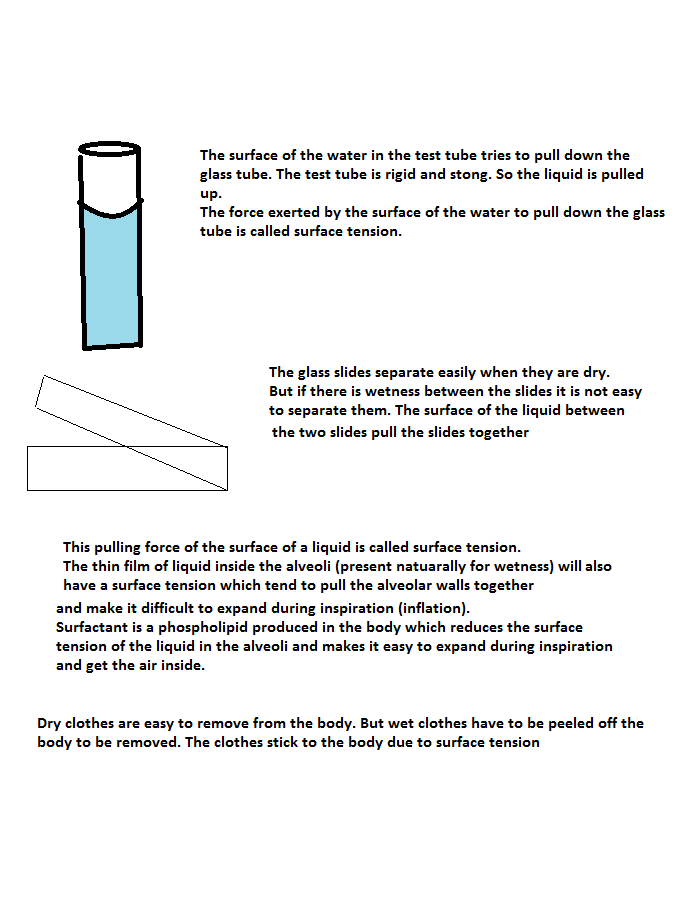Surfactant
Dr.V.Kasiviswanathan
Erode
Mention the normal respiratory rate. What is surfactant and enumerate its functions.
The normal respiration rate for an adult at rest is 12 to 20 breaths per minute.
Age Breaths per minute
Newborn to 6 months 30-60
6 to 12 months 24-30
1 to 5 years 20-30
6 to 12 years 12-20
Definition
Pulmonary surfactant is a surface-active lipoprotein complex formed by alveolar cells
Properties
The proteins and lipids in the surfactant have both hydrophilic and hydrophobic regions
It adsorbs to the air-water interface of alveoli
It reduces surface tension of the water in the alveoli
Pulmonary surfactant is available as a medication also.
Function
Increases pulmonary compliance
Prevents atelectasis (collapse of the alveoli) at the end of expiration
Facilitates reruitment of (reopening or reinflation) collapsed airways and alveoli
Alveolar size regulation - As the alveoli increase in size the surfactant becomes more spread out over the surface ot the liquid. This increases surface tension effectively slowing the rate of expansion of the alveoli
Prevents fluid accumumation and keeps airways dry - surface tension forces also draw fluid from capillaries to the alveolar spaces. surfactant reduces fluid accumulation and keeps the airways dry by reducing these forces.
Immunity - surfactant has immune function. it binds to sugars on the surface of pathogens and thereby opsonize them for uptake by phagocytes. It also regulates inflammatory responses. surfactant degradation or inactivation contributes to enhanced susceptibility to lung inflammation and infection
Disease related to surfactant
Infant respiratory distress syndrome (IRDS), also called neonatal respiratory distress syndrome -
Oxygen is given with a small amount of continuous positive airway pressure ("CPAP"), and intravenous fluids are administered to stabilize the blood sugar, blood salts, and blood pressure. If needed an endotracheal tube is inserted into the trachea and intermittent breaths are given by a mechanical device. An exogenous preparation of surfactant, either synthetic or extracted from animal lungs, is given through the breathing tube into the lungs. One of the most commonly used surfactants is Survanta, derived from cow lungs.
* * * * * * * * * * *
Mention the normal respiratory rate. What is surfactant and enumerate its functions.



